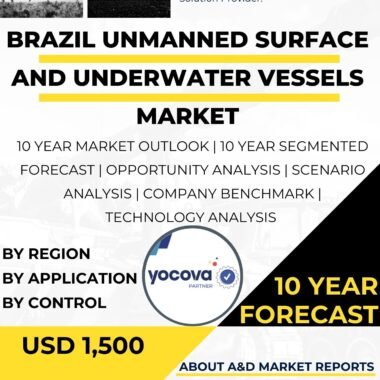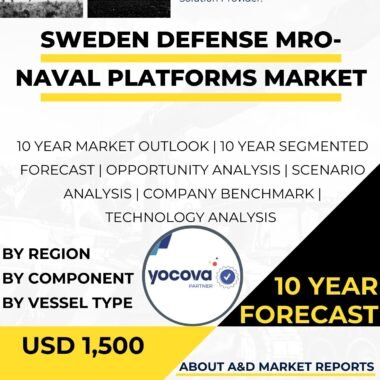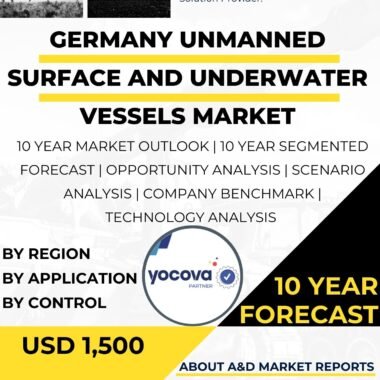Description
The unmanned surface and underwater vessels market in Japan has witnessed significant growth and strategic importance as the nation seeks to enhance its maritime capabilities, maritime domain awareness, and underwater exploration efforts. Unmanned surface and underwater vessels, also known as unmanned maritime vehicles (UMVs), are advanced robotic systems designed to operate on or under the water’s surface without direct human control, offering Japan a wide range of applications in both defense and civilian sectors.
The unmanned surface and underwater vessels market in Japan encompasses a diverse range of platforms, including autonomous surface vehicles (ASVs), unmanned underwater vehicles (UUVs), and remotely operated vehicles (ROVs). These vessels are utilized by the Japan Maritime Self-Defense Force (JMSDF), marine research institutions, offshore industries, and underwater robotics companies to perform a variety of missions and tasks.
One of the primary applications of unmanned surface and underwater vessels in Japan is in enhancing maritime surveillance and reconnaissance capabilities. ASVs equipped with advanced sensors and communication systems are deployed to gather real-time maritime data, monitor sea traffic, and enhance maritime domain awareness in Japan’s territorial waters and exclusive economic zone (EEZ).
Moreover, UUVs and ROVs play a crucial role in supporting marine research and underwater exploration. These unmanned vessels are equipped with scientific instruments and cameras, enabling researchers to gather critical data on oceanography, marine biology, and underwater ecosystems, contributing to Japan’s understanding of its marine environment.
Furthermore, the unmanned surface and underwater vessels market in Japan contributes significantly to offshore industries, such as oil and gas exploration and underwater construction. ROVs are used to perform underwater inspections, repair and maintenance tasks, and support exploration activities in challenging underwater environments.
As Japan emphasizes indigenous defense capabilities, the domestic production and development of unmanned surface and underwater vessels have seen substantial growth. Collaborations between the government, defense industry, and research institutions have fostered innovation, leading to the creation of state-of-the-art UMVs tailored to Japan’s specific maritime requirements.
Japan’s alliance with the United States has also played a significant role in the development of its unmanned maritime vehicle capabilities. Through this partnership, Japan has access to advanced UMV technologies, expertise, and support, contributing to the modernization of its maritime defense forces and enhancing interoperability with allied naval forces.
The unmanned surface and underwater vessels market in Japan also benefits from advancements in robotics, artificial intelligence, and communication technologies. Manufacturers have leveraged these developments to create UMVs with improved autonomy, communication capabilities, and adaptability, making them more effective and reliable in complex maritime scenarios.
However, the unmanned surface and underwater vessels market in Japan also faces challenges related to technological limitations, maritime regulations, and environmental concerns. Ensuring the safe and reliable operation of unmanned vessels in harsh maritime conditions and unpredictable underwater environments requires continuous advancements in sensor technology, propulsion systems, and navigation algorithms.
Moreover, addressing maritime regulations and international maritime laws is essential for the responsible and ethical use of unmanned vessels in Japan’s territorial waters and EEZ. Coordination with international maritime organizations and neighboring countries is necessary to ensure the safe and lawful operation of UMVs in shared maritime spaces.
Additionally, environmental considerations are crucial when deploying unmanned vessels for marine research and exploration. Minimizing the environmental impact of UMVs and ensuring the protection of marine ecosystems are essential for responsible underwater exploration and research.
In conclusion, the unmanned surface and underwater vessels market in Japan has witnessed significant growth and strategic importance, driven by the nation’s focus on enhancing maritime capabilities, maritime domain awareness, and underwater exploration efforts. Unmanned surface and underwater vessels provide critical solutions for maritime surveillance, marine research, offshore industries, and underwater robotics, catering to Japan’s specific maritime requirements. The collaboration between the government, defense industry, and research institutions, as well as international partnerships with allied nations, fosters innovation and contributes to the growth of the domestic UMVs market. Addressing challenges related to technological advancements, maritime regulations, and environmental considerations is crucial for further enhancing Japan’s unmanned surface and underwater vessel capabilities and ensuring that its maritime defense forces, marine research institutions, and offshore industries have access to advanced and reliable UMVs to support maritime security, enhance marine research, and contribute to regional and global marine conservation efforts. With its strategic focus on indigenous defense capabilities and partnerships with allied nations, Japan remains committed to leveraging advanced unmanned surface and underwater vessel technologies to enhance its maritime capabilities, safeguard marine ecosystems, and contribute to regional and global peace and stability.




